Samsung PS60E6500 Review
Samsung PS60E6500
Samsung's latest mid-range 60-inch plasma TV is a serious bargain.
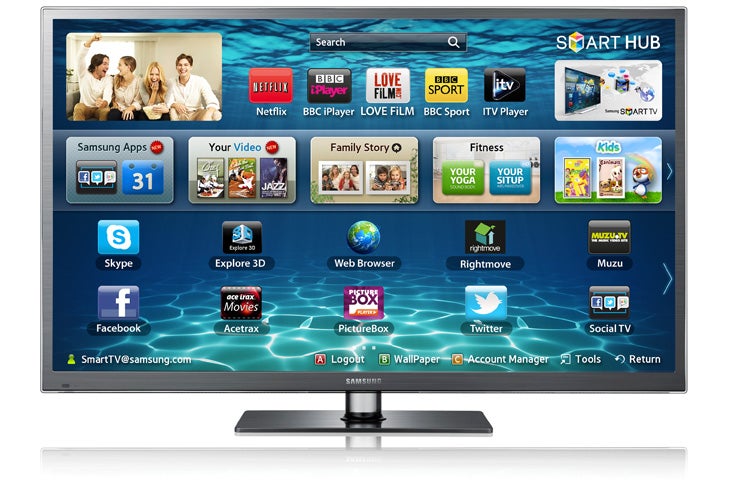
Verdict
Pros
- Outstanding value for money
- Excellent all-round picture quality
- Class-leading online service
Cons
- Black levels not as deep as some Panasonic plasmas
- A few too many rubbish online apps among the good stuff
- Occasional stuttering with 3D
Key Specifications
- Review Price: £1440.00
- 60in Plasma TV
- Active 3D support with 2 pairs of glasses included
- Real Black Pro panel
- Smart TV functionality built in
- Multimedia playback via USB and DLNA
The Samsung PS60E6500 only costs £1,440. Even though it’s got a 60-inch screen, a high-spec plasma panel, and the latest version of the company’s hugely impressive new Samsung Smart TV online system. Blimey. Time to embark on a hunt for the ‘catch’, then.
Samsung PS60E6500 Design
Some might feasibly consider the Samsung PS60E6500’s looks to be a catch. For when placed alongside one of the company’s gloriously trim and futuristic looking LED flagship TVs, the inch-wide bezel and relatively chunky butt of the Samsung PS60E6500 look positively old fashioned. However, we’d argue that the application of a crystal-esque finish and greyish colour scheme to the bezel prevent the PS60E6500 from just being another big black rectangle.
It’s also worth stressing in Samsung’s defence that plasma panels are much heavier than LCD ones, and so need to be supported in fairly robust frames. But anyway, it’s what goes on inside the frame that matters, not the frame itself, right?
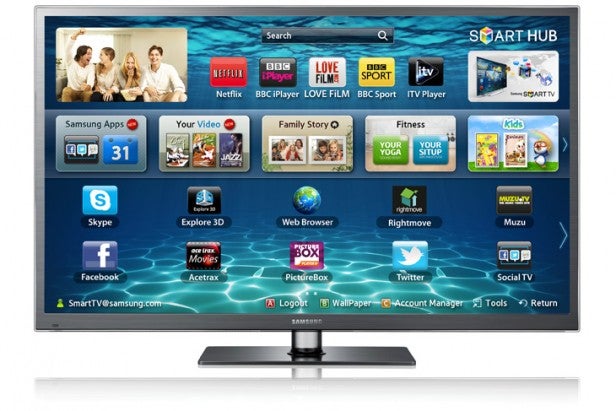
Samsung PS60E6500 Connectivity
The Samsung PS60E6500’s connections are mostly good but perhaps a little odd. The odd bits include the fact that there is around a 50/50 split between connections you can access from the TV’s edges and connections which stick straight out the back, and Samsung’s descision to bestow the PS60E6500 with just three HDMI ports when most mid-range and high-end sets now give you four.
The problem with having the likes of the Freeview RF/Freesat LNB inputs, LAN port and even one of the HDMIs sticking straight out of the TV’s rear, of course, is that it makes the set markedly trickier to hang on a wall.
A quick scout around inside the Samsung PS60E6500’s packaging quickly confirms that it doesn’t ship with the second trackpad remote control found with the company’s flagship 7000 series TV and the Samsung PS51E8000. Nor does this 60-inch set support the motion and voice control systems boasted by Samsung’s higher-end TVs. But you know, while these alternative control systems have their moments, for the most part we didn’t find ourselves missing the experience of waving at and chatting to our TV.
Samsung PS60E6500 Smart TV
The Samsung PS60E65000 does retain the company’s latest Smart TV engine, though. Which is handy, as this engine arguably represents the state of the art where Smart TV is concerned thanks to its exceptional full HD interface and some of its groundbreaking features.
On the presentation side we love the Smart Hub, where pressing the colour Smart button on the remote calls up a hugely pretty, icon-laden but not-at-all intimidating home screen that provides access to a great mix of online and live broadcast content, as well as a host of apps providing links to everything from games and social networking tools to fitness videos, streaming movie services and information apps.

Particularly intriguing are Samsung’s Family Story, Fitness and Kids ‘zones’, given prominence by especially large icons in the top half of the Smart Hub. The Family Story lets you set up a secure network with your family and friends for sharing photos and messages. The Fitness zone allows you to use a wide selection of fitness videos and chart your health progress via onscreen graphs. And the Kids zone aggregates together kid-friendly videos, as well as providing a virtual ‘sticker book’ into which you can reward and track good behaviour.
While we appreciate the thought behind these new zones, though, it remains our view that video streaming and catchup services are still king where online TV functionality is concerned. So it’s great to find that an immediate update to the service during our tests added the ITV Player to the list of available options, joining other highlights of the BBC iPlayer, LoveFilm, BBC Sport, Netflix, Samsung’s own 3D channel, YouTube, Red Bull TV, Viewster, and Picturebox.
While we still feel Samsung might benefit from having a cull of its less useful apps (some really are obscure) to make it easier to see the good stuff, overall Samsung’s Smart TV service feels like it’s the most likely blueprint for the way such services are going to develop in the years to come.
Samsung PS60E6500 Performance
The Samsung PS60E6500 is also a dab hand at playing back video, photo or music multimedia, be it from USB storage devices (via its two USB inputs) or a DLNA networked PC. Samsung could do with making its TVs easier to hook up to Macs as well as PCs, though. Only providing its ‘AllShare’ DLNA software for PC platforms just doesn’t make sense in these Apple-obsessed times, no matter what Samsung’s personal affiliations might be.
Attempting to set the Samsung PS60E6500 up for our tests reveals a reasonably healthy set of adjustments. You can, for instance, adjust the Cell Light output (the plasma equivalent of LED’s backlight adjustment), as well as the usual contrast and brightness options. Plus there are highlights of an optional, multi-level dynamic contrast system, a black tone booster, a flesh tone adjustment, gamma and white balance tweaks, and various types of noise reduction. Most of which, as usual, we strongly recommend that you leave turned off, at least when watching high definition content.
Samsung plasmas really closed the gap on their Panasonic rivals last year, only to see the Japanese brand surge ahead again in 2012 with the extraordinary black levels of its latest NeoPlasma panel designs. However, while the Samsung PS60E6500’s black level response certainly isn’t on a par with Panasonic’s best efforts, the set still produces a very winning picture overall. Especially considering it’s a 60-inch Smart TV that costs under £1,500.
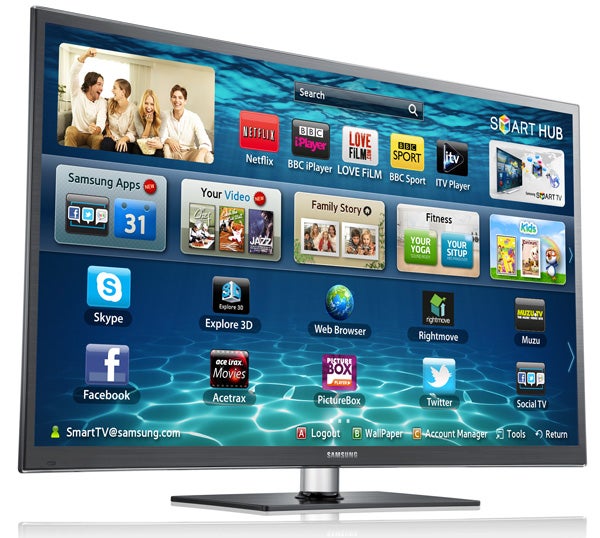
Let’s address the black level thing first. Basically, very dark scenes look undeniably slightly greyer in their darkest parts than those of the Panasonic TX-P65ST50B and especially the Panasonic TX-P42GT50 and Panasonic TX-P55VT50 models. However, the black level ‘gap’ strangely doesn’t seem as pronounced on this 60-inch model as it does with Samsung’s smaller plasmas. Especially if you set the Samsung PS60E6500‘s Cell Light output down to around its 8 or 9 level for dark room movie viewing (though we’d recommend running it a bit higher for normal daylight TV fare).
In fact, watching dark scenes on the Samsung PS60E6500 is a hugely engaging experience, especially compared with the greyness and clouding problems so routinely witnessed with such content on LCD TVs. What’s especially good is the way the set’s impressive black levels are achieved with practically no loss of shadow detail – an achievement that proves especially effective with material like the burning repository sequence in Chapter 15 of Harry Potter and the Deathly Hallows Pt II. Here you get a stunning contrast range between the fire and the blackness of the unlit walls and shelves, as well as being able to make out all manner of subtle detailing in the objects that litter the repository’s floors.
It’s a big relief, too, to be able to enjoy very dark scenes without having to be on the look out for the sort of backlight inconsistencies so common with LCD tech.
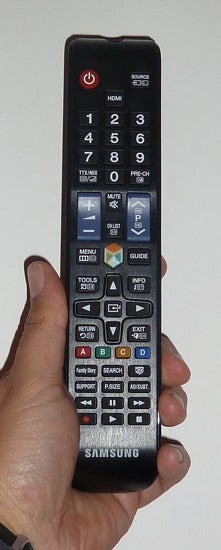
There is a touch more green dotting noise visible on the Samsung PS60E6500 in some especially dark areas than you get with Panasonic’s latest plasmas, but this is very low-level, and you might not notice it at all from a typical sort of viewing distance.
Samsung PS60E6500 Picture Quality
The Samsung PS60E6500’s pictures look impressively sharp with HD sources too, as the 60-inch screen and an apparently very pure video path revel in all those extra pixels of image data that make HD so lovable. This sharpness remains almost completely unaffected by motion, too, partly as a result of plasma’s innate response time advantage over LCD, but also as a result of some impressive Samsung-specific work in this key department. In fact, we’d say motion is handled better on Samsung’s models than Panasonic’s, as moving objects look both slightly more natural and also less affected by the noise that remains one of Panasonic’s only real weaknesses this year.
Samsung also scores points with the PS60E6500 over Panasonic with the way its pictures seem less negatively affected in brightness terms by the amount of ambient light in the room. The Samsung PS60E6500 sports one of Samsung’s Real Black Pro filters, and this seems to do a great job of stopping light from your room affecting the plasma cells in the TV.
Yet more good news finds the Samsung PS60E6500’s ability to upscale SD content to its full HD resolution with this service handled with aplomb, adding detail and sharpness, yet simultaneously tackling with surprising efficiency the sort of source noise you tend to get in all too many standard definition digital broadcasts these days. There was a time when watching standard definition broadcasts on a 60-inch screen really wasn’t much fun at all, but Samsung is leading the way in making those days a thing of the past.
Samsung PS60E6500 3D
Next up is 3D, courtesy of the two pairs of glasses you get free with every Samsung PS60E6500. And once again the PS60E6500 comfortably outperforms our expectations. In fact, it delivers one of the very best 3D experiences we’ve had.
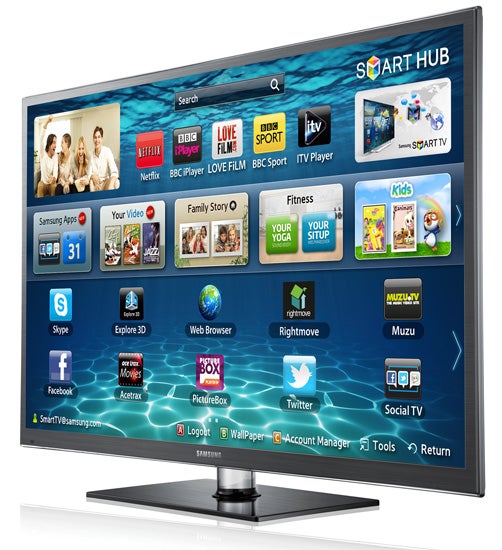
For starters, its sheer size makes 3D much more effective, filling your field of vision rather than just presenting you with a weird 3D ‘hole’ in your living room as you get with small 3D screens.
Also quite mesmerising is how detailed and ‘HD’ 3D images look. You can easily see such minutiae as the weaves in people’s clothing and individual strands of hair – all noiselessly, and all without any of the jaggedness and line structure that you get with some rival passive 3D systems.
Even more tellingly, HD 3D pictures look quite a bit more detailed on the Samsung PS60E6500 than those of Panasonic’s mighty 3D plasmas, making them arguably the most genuinely HD 3D images we’ve yet seen on a domestic plasma TV.
Colours look surprisingly natural despite the impact of the 3D glasses too, and motion is impressively well handled – for the most part. The reason for this qualification is that oddly the image occasionally pauses momentarily, as if it’s skipped a frame or two. The cause of this is unclear to us, and it doesn’t happen in 2D mode. But luckily it doesn’t happen regularly enough with 3D to really irritate, and thus leaves the numerous 3D picture strengths to rule the roost.
When it comes to crosstalk ghosting noise, the Samsung PS60E6500 suffers with it slightly more than the likes of the Panasonic TX-P55VT50 (though slightly less than the Panasonic TX-P65ST50B). However, overall we’d class the amount of crosstalk as pretty low-level, so again, it’s the positives that win out overall.
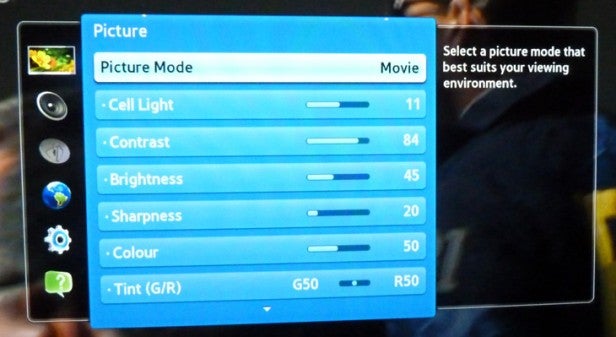
The last aspect of the Samsung PS60E6500’s pictures to test is the screen’s input lag – a crucial performance aspect for gamers. Happily we measured the PS60ES6500’s input lag at below 30ms, making it one of the best TV’s we’ve seen this year when it comes to minimising the delay between an image arriving at its inputs and that image appearing on its screen. Just make sure if you’re gaming, though, that you select the Game mode tucked away inside the General part of the System sub-menu.
Joining the Samsung PS60E6500’s mostly terrific pictures is a decent audio performance. The extra size of the TV’s bodywork allows it to produce a more rounded tone than Samsung’s skinny-boy LED models, complete with more bass and a generally richer soundstage. There’s a slightly muddy character to really loud scenes, but overall the sound quality is good enough to make adding a separate sound system something you can at least delay if funds are currently tight.
Samsung PS60E6500 Verdict
The Samsung PS60E6500 is one of the biggest and most pleasant TV surprises of the year. Not only is it far and away Samsung’s best plasma TV yet, but it’s arguably our favourite Samsung TV of 2012, period. Especially given how cheap it is.
It also proves, crucially, that Panasonic isn’t the only plasma brand still worth considering.
How we test televisions
We test every TV we review thoroughly over an extended period of time. We use industry standard tests to compare features properly. We’ll always tell you what we find. We never, ever, accept money to review a product.
Trusted Score
Score in detail
-
Features 9
-
3D Quality 9
-
Value 10
-
Design 8
-
2D Quality 9
-
Sound Quality 8
Features
| Size (Inch) | 60in |
| Display Type | Plasma |
| Max. Resolution | 1920 x 1080 |
| Full HD 1080p | Yes |
| Digital Tuner | Yes |
| Freeview HD | Yes |
| Freesat HD | Yes |
| 3D Ready | Yes |
| Refresh Rate (Hertz) | 600 (via sub-field drive)Hz |
Connectivity
| HDMI | 3 (v1.4) |
| Component | 1 |
| Composite | 1 |
| Scart | 1 (RGB) |
| Digital Audio Out | 1 (optical) |
| Headphone | 1 |
| Ethernet | 1 |
| WiFi | Yes (built-in) |
Physical Specifications
| Height (Millimeter) | 832.6mm |
| Width (Millimeter) | 1394.3mm |
| Depth (Millimeter) | 56mm |
| Weight (Gram) | 29500g |

